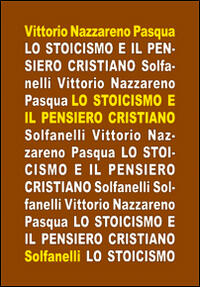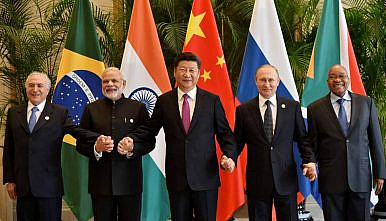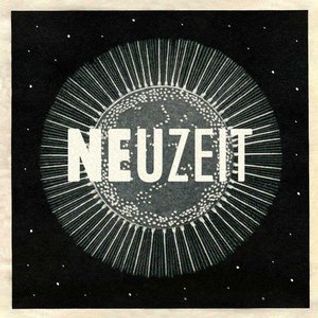Carteggio Seneca – San
Paolo
· Carteggio Seneca –
San Paolo (Epistolae Senecae ad Paulum et
Pauli ad Senecam): 14 lettere, alcune attribuite a Seneca e altre a San
Paolo, che attesterebbro l'esistenza di un'amicizia tra Seneca e l'apostolo
Paolo. Questa idea trae la propria origine soltanto a partire dal IV secolo e
proprio in virtù dell'apparizione in quegli anni di un epistolario attribuito ai
due. E.g. San Girolamo ne venne a conoscenza nel 392 d.C.
·
Questione: Seneca cristiano?
Nel Medioevo molti dotti lo ritenevano tale a causa del carteggio.
·
Presunta vicinanza
dottrinale di Seneca al Cristianesimo: cfr. Tertulliano (De
anima, ‘Seneca saepe noster’ = Seneca spesso è cristiano); Lattanzio
(Seneca cristiano per sapienza).
·
Problemi: 1) Carteggio è
autentico? 2) Seneca si convertì al Cristianesimo?
·
Diverse posizioni: 1) Alcuni critici sono convinti
dell’autentiticà del carteggio; 2) altri hanno delle riserve; 3) altri
sospendono il giudizio per lontananza nel tempo storico.
·
Sant’Agostino e San
Girolamo: entrambi a conoscenza del carteggio > quindi parrebbe autentico;
l’amicizia sarebbe quasi sicuramente vera; la conoscenza tra i due massimamente
certa.
·
Epistolario pubblicato nel IX sec. da Alcuino e dedicato a Carlo Magno. Altri
autori (Freculfo di Lisieux; Onorio d’Autun; Vincenzo di Brauvais; Ottone di
Zuizinga; et al.) convinti di
amicizia.
·
Pietro il
Venerabile e Abelardo: citano le lettere senza dedurre che Seneca fosse
divenuto cristiano.
·
Il domenicano
Giovanni Colonna (XIII-XIV secolo): fa di Seneca un cristiano.
·
Boccaccio: S. Paolo aveva
Seneca come compagno cristiano.
·
Dal XV sec.: Con il
perfezionarsi della critica filologica
ed umanistica contestazione del carteggio > e.g. Lorenzo Valla, Cecilio
Secondo Curione, Giusto Lipsio > stile letterario non sarebbe aureo come il
solito di Seneca.
·
Erasmo da Rotterdam: afferma che
carteggio è falso e accusa S. Girolamo di malafede.
·
Cardinale Roberto
Bellarmino: afferma che carteggio è falso, ma i due potrebbero essersi incontrati.
·
Tra XV-XVIII sec.: carteggio
ritenuto generalmente falso.
·
Dal XIX sec.: ritorna ad essere
ritenuto autentico e si pensa che Seneca fosse cristiano.
·
De Maistre: sicuro che Seneca
abbia ascoltato S. Paolo.
·
Sicuramente Lucio Giunio Gallione, proconsole a Corinto, fratello
di Seneca, conobbe S. Paolo (assolvendolo dalle accuse per diffusione nuova
dottrina cristiana) e ne avrà parlato al fratello.
·
CRITICA MODERNA:
Problemi: 1) E’ vera la corrispondenza?; 2) E’ unica (i.e. scritta da un unico
autore)?
·
Per Momigliano e
Barlow sono più autori; per Westerburg
alcune lettere sono autentiche, altre no.
·
CRITICA
CONTEMPORANEA: XX sec.: si riapre il dibattito. Punto di riferimento: Atti del convegno su Seneca e i Cristiani
(Univ. La Cattolica, Milano, 1999) > Alcuni relatori: è un apocrifo del Nuovo
Testamento; altri: è autentico:
1) ad Ostia iscrizione funeraria > alcuni parenti di Seneca (Annei) sono
cristiani; 2) il carteggio è valido, ma due lettere sono tardive e forse
apocrife.
·
Anche se Seneca era pagano, possedeva molto intuito cristiano (parla di déi).
·
Comunque lettere non
parlano di teologia.
·
Erano originariamente scritte in latino o in greco? Per
Pascal in greco. Ma non esisterebbero codici, versioni o traduzioni in lingua
greca.
· Socci: Paolo di Tarso e
Seneca amici; epistolario non apocrifo ma autentico (tranne ultime 2 lettere).
·
Sicuramente affinità
d’animo tra i due: amavano virtù e
perfezione morale.
·
Entrambi uccisi da
Nerone:
chi da cristiano, chi da stoico.
·
Ad oggi, corrispondenza è presente in oltre 400 manoscritti in latino (spesso dei
sec. XIV-XV).
·
Certo che Seneca conobbe idee morali e dottrina cristiana di S. Paolo, e S. Paolo riconosce agli stoici coerenza morale e correttezza
etica.
·
·
LE LETTERE: Osservazioni:
1)
I LETTERA: S. Paolo chiama Seneca ‘fratello’ (frater).
2)
III LETTERA: Seneca vorrebbe
far leggere gli scritti di S. Paolo all’imperatore Nerone.
3)
V LETTERA: Seneca afferma
che S. Paolo ha fatto bene a separarsi dall’antica religione (pagana o ebraica)
e ad abbracciare la cristiana, avendolo fatto non per leggerezza ma a ragion
veduta.
4)
VII LETTERA: Seneca afferma di
aver letto le lettere di S. Paolo ai Galati, Corinzi e Achei, e sostiene che
tali lettere onorino la divintà (‘ut
etiam cum honore divino eas exhibes’); afferma che lo Spirito Santo è in
Paolo, espirmendo attraverso la bocca concetti tanto sublimi (‘Spiritus enim sanctus in te et super
excelsos sublimi ore satis venerabiles sensus exprimit’); afferma che
l’impratore si è commosso ad udire le parole di Paolo > Parole di Nerone:
‘E’ stupefacente che una persona priva di regolare istruzione possa esprimere
tali pensieri!’ (‘mirari eum posse ut qui
non legitime imbutus sit taliter sentiat’), al che Seneca rispose a Nerone
che gli dèi parlano per voce di gente semplice.
5)
VIII LETTERA: Paolo rimprovera
Seneca per aver parlato a Nerone e a Poppea della dottrina cristiana,
esortandolo a non farlo più. L’amicizia tra i due poteva uscirne compromessa:
forse teme per sè e per i confratelli cristiani.
6)
IX LETTERA (per
alcuni XIV): Seneca si rattrista per le persecuzioni contro i cristiani dopo
l’incendio di Roma (64 d.C.). Afferma che ogni male di Roma è attribuito o agli
ebrei o ai cristiani, con conseguenti persecuzioni. Afferma di dover sopportare
serenamente le avversità e le persecuzioni, finché la beautitudine eterna non
ponga fine ai nostri mali (pensiero molto cristiano, ma anche stoico): ‘Sed feramus aequo animo et utamur foro quod
sors concessit, donec invicta felicitas finem malis imponat’).
7)
XIII LETTERA: Di nuovo Seneca
afferma che Paolo parla per grazia ed ispirazione divina.
8)
XIV LETTERA: Tra le più belle.
Qui Paolo crede che il pensiero di Seneca sia stato illuminato da Dio. Gli
chiede di tralasciare il paganesimo e di farsi testimone di Gesù Cristo – di
cui, secondo Paolo, Seneca ha compreso la dottrina – e di esserne portavoce
presso l’imperatore e la corte. (Se Seneca fosse riuscito a convertire Nerone,
l’Impero romano sarebbe diventato cristiano quasi 300 anni prima, i.e. prima
del 313 d.C. con Editto di Milano di Costantino > libertà religiosa per
cristiani e del 380 d.C. con Editto di Tessalonica di Teodosio >
Cristianesimo diventa religione di Stato).
REFERENZE BIBLIOGRAFICHE: V. N. Pasqua, Lo Stoicismo e il pensiero cristiano, Chieti: Solfanelli, 2016.








